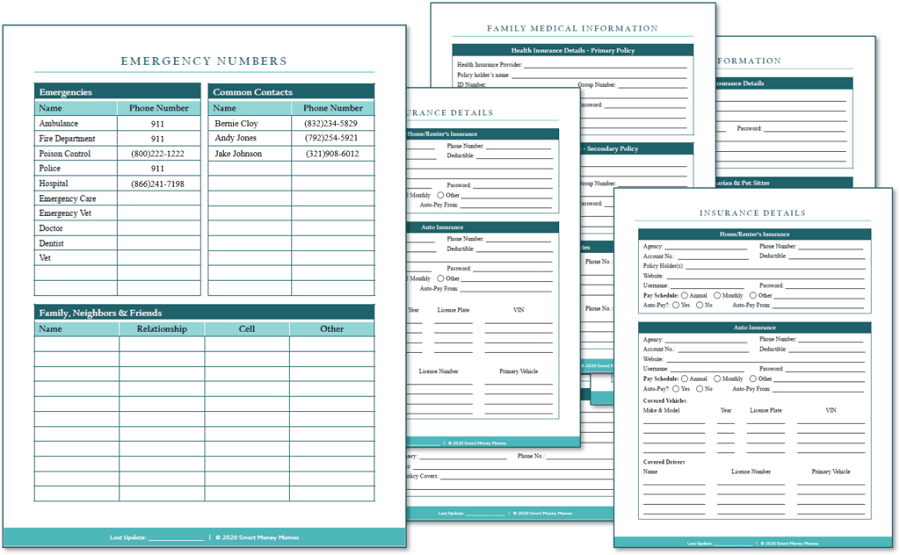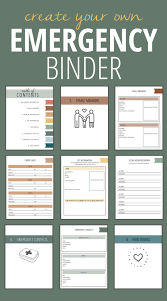Creating Your Essential "In Case of Emergency" Binder: A Comprehensive Guide
In today's unpredictable world, preparation is key to navigating unexpected emergencies with confidence and ease. Enter the "In Case of Emergency" (ICE) binder – a centralized repository of crucial information and documents designed to streamline your response in times of crisis. Let's delve into the essential components of crafting your own ICE binder.
1. Personal Identification Documents
Begin by assembling essential personal identification documents within your ICE binder. This includes copies of driver's licenses, passports, birth certificates, and social security cards for all household members. Ensure these documents are stored securely and readily accessible in case of evacuation or emergency medical situations.

in case of emergency binder
2. Financial Information
Organize vital financial information to facilitate efficient management of your assets during emergencies. Include copies of bank account statements, investment portfolios, insurance policies, and property deeds. Additionally, include contact information for financial institutions, account numbers, and login credentials for online banking platforms.
3. Medical Records and Emergency Contacts
Centralize medical records and emergency contact information to ensure prompt access to critical healthcare details. Compile copies of health insurance cards, medication lists, allergy information, and recent medical history for each family member. Include contact details for primary care physicians, specialists, and preferred hospitals or healthcare facilities.
4. Legal Documents
Safeguard important legal documents within your ICE binder to expedite decision-making and ensure compliance with legal protocols during emergencies. This includes wills, trusts, power of attorney documents, and advance healthcare directives. Additionally, include copies of marriage certificates, divorce decrees, and custody agreements if applicable.
5. Household Inventory and Property Information
Document a comprehensive inventory of household belongings and property information to facilitate insurance claims and recovery efforts in the event of natural disasters or property damage. Include photographs or videos of valuable assets, serial numbers for electronics, and appraisals for high-ticket items.
6. Emergency Plans and Evacuation Routes
Develop detailed emergency plans and evacuation routes tailored to your household's needs and geographical location. Include maps highlighting evacuation routes, emergency shelter locations, and designated meeting points. Additionally, outline procedures for handling specific types of emergencies, such as fires, earthquakes, or severe weather events.

in case of emergency binder
7. Miscellaneous Essentials
Consider including additional miscellaneous essentials within your ICE binder to address specific needs or scenarios. This may include pet care instructions, copies of important family photos, or a list of trusted neighbors or community resources for additional support during emergencies.
In conclusion, assembling an "In Case of Emergency" binder serves as a proactive measure to safeguard your family's well-being and streamline emergency response efforts. By organizing personal identification documents, financial information, medical records, legal documents, household inventory, emergency plans, and miscellaneous essentials within a centralized binder, you can navigate unexpected crises with confidence and peace of mind. Be prepared, stay protected, and empower yourself to face whatever challenges may arise.